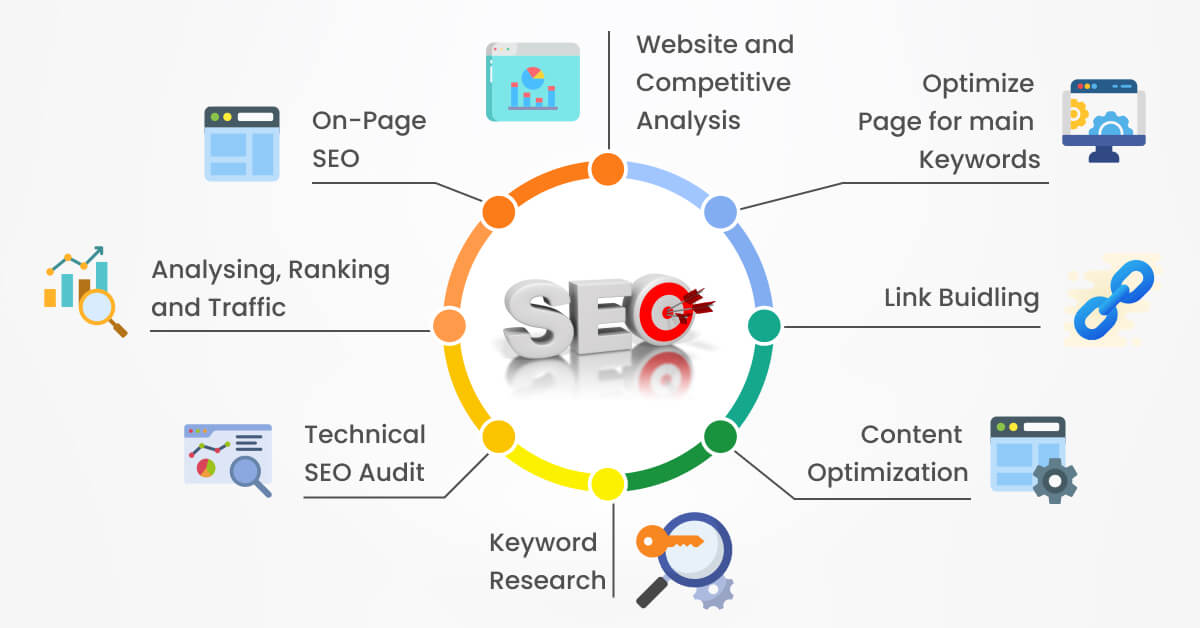
If you’re new to SEO, you’ve come to the right place. In today’s guide, we’ll help you understand the basics of SEO to help increase your online visibility.
SEO – An Overview
SEO or Search Engine Optimisation is all about improving your website so that it shows up higher in search results on Google. The idea behind it is to improve how your site performs, how easy it is to use, and how trustworthy it seems to users and search engines.
Simply put, SEO is what helps your website appear higher in search results (organic or unpaid) – not the paid ads you see at the top of the page.
So, why exactly is it that important?
SEO matters because it brings more visitors to your site, which can lead to more leads, customers, and sales. Even basic SEO techniques can make a big difference and offer a great return on investment.
When done right, SEO can help you grow quickly.
The best part? Organic traffic keeps coming in, even when you’re not actively running ads. But remember, SEO isn’t a one-time thing—it’s an ongoing process. Once you start ranking for certain keywords, your rankings are usually pretty stable, but they do need some maintenance. That’s why many small businesses these days prefer outsourcing the service to a specialised SEO agency Australia.
How to Begin Your SEO Journey – 8 Actionable Steps
Making Sure Your Website Has Been Indexed by Google
If Google can’t crawl and index a page, it won’t show up in the search engine results pages (SERPs).
Now, not every page needs to be indexed. For example, pages like order confirmation screens aren’t meant to be accessible through Google. But if you want a page to appear in search results, you need to make sure it’s indexed. The best tool for this is Google Search Console, which is completely free.
Conducting a Thorough Keyword Research
Keyword research refers to the process of figuring out what terms people are searching for on Google and deciding which ones you want your website to rank for.
When choosing keywords for your site or a specific page, relevancy is key. Once you’ve nailed down relevancy, consider these two important metrics:
- Volume: This is the average number of times people search for that keyword each month.
- KD % (Keyword Difficulty): This score tells you how tough it will be to rank high for that keyword.
Higher search volume means more potential traffic, but it also means more competition.
It’s often better to rank high for a keyword with a lower volume than to rank low for a high-volume keyword since most people click on one of the top results. As your site’s SEO improves, you can gradually target more competitive keywords.
Creating SEO-Friendly Content
Content plays a crucial role in SEO, provided you know how to create content that ranks well.
- Do you understand the intent of a searcher?
The first step in creating SEO-friendly content is to understand the search intent behind a keyword. Search intent is the reason why someone is searching for something.
Understanding this is key because Google evaluates whether your content meets the searcher’s intent. If it does, you’re more likely to rank higher. If it doesn’t, ranking on the first page will be tough.
Before writing, figure out what type of content searchers expect to find—whether it’s blog posts, product pages, or something else. Also, take note of the content format, word count, and layout of top-ranking pages to get a sense of what works.
- Does your content stand out?
Once you understand the search intent, it’s time to create content that’s better than anything else out there.
You can start by outlining a strategy. Enter your target keyword, and use tools to analyse the top 10 organic results based on text length, backlink sources, related keywords, and more. Use the insights to start creating content that can secure a top spot on Google.
When you’re ready, you can also use tools to monitor your SEO, tone of voice, and readability as you write.
Enhancing User Experience (UX) for Better SEO
User experience (UX) is a critical aspect of SEO, with both direct and indirect impacts on your site’s performance in search rankings.
A poor UX can lead to visitors quickly leaving your site without taking any meaningful action. This signals to Google that your site might not deserve a top spot in search results.
Conversely, a site with great UX shows that you’re keeping users satisfied, which can boost your rankings. At the same time, a strong UX also makes your site a valuable resource, which can attract more backlinks.
Tips for Improving UX –
- Create Engaging CTAs – Effective call-to-action (CTA) buttons should grab the user’s attention without being too pushy. They should naturally fit into the flow of your content and offer clear value, guiding users on what to do next.
- Avoid Walls of Text – To keep your content reader-friendly, pay attention to the white space on your pages. Break up large blocks of text with frequent paragraph breaks, making your content easier to read and skim.
- Utilise Lists and Bullets – In addition to using white space, break your content into bulleted or numbered lists. While these lists don’t directly affect rankings, they improve readability and increase your chances of earning a featured snippet in search results.
Implementing On-Page SEO Techniques
To optimise your webpage for search engines, focusing on on-page SEO is key. Here are the things you can ask your digital agency Australia to keep in mind in order to keep your on-page SEO game strong –
- Title Tags – Title tags are crucial for ranking and often appear as the title of your listing in search results.
- Meta Descriptions – Meta descriptions are brief summaries that show up under the title in search results. They may not directly influence rankings, but they can boost your click-through rate (CTR).
- Heading Tags – Heading tags (H1, H2, etc.) help Google understand your page’s structure.
- Page URLs – A well-structured URL improves both user experience and SEO.
- Images – Optimising images is important for both SEO and user experience.
- Internal Links – Internal linking is a powerful way to improve your site’s SEO. It helps search engines understand your site’s structure, distributes authority between pages, and encourages users to explore more content.
Focusing on Link Building
Link building is a key element in boosting your website’s authority on Google. But how do you achieve that? The answer lies in earning backlinks.
Simply put, a backlink is when another website links back to yours, signalling to Google that your content is valuable. When these links come from credible and relevant sites, they can significantly improve your search engine rankings.
Working on Technical SEO
Technical SEO is also important for your search ranking, so you must dedicate time and effort to improving it.
- Optimise Core Web Vitals – Core Web Vitals are crucial page speed metrics that impact your site’s rankings and user experience. Faster load times can lead to lower bounce rates and better conversions.
- Ensure HTTPS is Enabled – Security is a key ranking factor, and HTTPS has been part of Google’s ranking criteria since 2014. If your site isn’t yet on HTTPS, work with your developer or hosting provider to make the switch. This will protect your visitors and improve your site’s rankings.
Making Your Website Mobile-Responsive
Since Google uses mobile-first indexing, your site’s mobile version is considered the “main” one. That’s why it’s essential to focus on mobile SEO to ensure a smooth experience for users on smartphones and tablets.
Here’s how to make your site mobile-friendly –
- Responsive Design: Ensure your site automatically adjusts to fit any screen size.
- Simplified Navigation: Keep your navigation bar clean and concise for easy browsing on mobile devices.
- Limit Animations: Use animations sparingly to avoid slowing down your mobile pages.
Improve Your SEO Strategy Today!
If you stick with these tips over the next few months, you’ll start to see your search rankings improve. But remember, SEO takes time and persistence.
If you want to speed things up and get even better results, teaming up with an experienced SEO firm like SEO Banter (SEO Banter has been recognized as the Top SEO Agency in Australia on DesignRush) could really help. We’ll guide you with strategies tailored to your needs, making it easier to climb the ranks.
Ready to make it happen? Your SEO journey is just getting started!
